- News
- Reviews
- Bikes
- Accessories
- Accessories - misc
- Computer mounts
- Bags
- Bar ends
- Bike bags & cases
- Bottle cages
- Bottles
- Cameras
- Car racks
- Child seats
- Computers
- Glasses
- GPS units
- Helmets
- Lights - front
- Lights - rear
- Lights - sets
- Locks
- Mirrors
- Mudguards
- Racks
- Pumps & CO2 inflators
- Puncture kits
- Reflectives
- Smart watches
- Stands and racks
- Trailers
- Clothing
- Components
- Bar tape & grips
- Bottom brackets
- Brake & gear cables
- Brake & STI levers
- Brake pads & spares
- Brakes
- Cassettes & freewheels
- Chains
- Chainsets & chainrings
- Derailleurs - front
- Derailleurs - rear
- Forks
- Gear levers & shifters
- Groupsets
- Handlebars & extensions
- Headsets
- Hubs
- Inner tubes
- Pedals
- Quick releases & skewers
- Saddles
- Seatposts
- Stems
- Wheels
- Tyres
- Health, fitness and nutrition
- Tools and workshop
- Miscellaneous
- Buyers Guides
- Features
- Forum
- Recommends
- Podcast
review
£1,699.00
VERDICT:
Classy titanium performer that eats miles in style
Weight:
8,380g
Contact:
www.chargebikes.com
At road.cc every product is thoroughly tested for as long as it takes to get a proper insight into how well it works. Our reviewers are experienced cyclists that we trust to be objective. While we strive to ensure that opinions expressed are backed up by facts, reviews are by their nature an informed opinion, not a definitive verdict. We don't intentionally try to break anything (except locks) but we do try to look for weak points in any design. The overall score is not just an average of the other scores: it reflects both a product's function and value – with value determined by how a product compares with items of similar spec, quality, and price.
What the road.cc scores meanGood scores are more common than bad, because fortunately good products are more common than bad.
- Exceptional
- Excellent
- Very Good
- Good
- Quite good
- Average
- Not so good
- Poor
- Bad
- Appalling
The Charge Skewer is a super long-distance companion for all you stylish mile eaters out there. In a week in which we've already tested Fixie Inc's Betty Leeds here's another bike that at first sight looks like an exercise in retro-styling but in reality aspires to delivering contemporary levels of performance. The two bikes couldn't be more different in materials and approach but both are competing for the same rider.
While the steel Betty Leeds is all curves and quirks the titanium Skewer is about straight lines and classic road bike geometry given a modern twist (courtesy of some contemporary tube profiles) that pull all the best elements together to create a memorable machine.
There's no getting away from the fact that the Skewer does, on first impression, look like a revamped classic bike – particularly in the leather spec of the first model we had in. Compacts are now so ubiquitous that the more traditional geometry takes a bit of getting used to. That's not to say it's an ugly bike, very much the opposite. The clean lines are complemented by the understated graphics, placed low down by the bottom bracket; most of the frame is just plain Ti. All the welds are super-neat on the Taiwanese frame, put together from Tange Ultimate 3AL-2.5V butted titanium tubing in a factory that makes only Titanium bikes and, by welders Charge say they hand-pick for the job.
The Skewer is a frame-and-fork-only purchase, so it's up to you what you hang off it. We had two versions of the bike. The first, with SRAM Red and some Brooks leather, weighed in at 16.5lb even with wheels that weren't particularly light; the frame weight is stated at 3lb. The bike we actually rode was a mix of Ultegra and other pretty standard stuff, bringing the total to 18.5lb. I reckon that at £1699 the frame's deserving of slightly more exotic kit, and a slightly less weight.
What's it like to ride?
I went into a fair bit of detail on the first ride, and most of what I said still holds true after longer in the saddle. So what follows is those thoughts, interspersed with others that have come from more miles on board...
As soon as you hop onto the Skewer and launch yourself on a ride, the Titanium character of the bike is apparent. There's a liveliness to the Skewer right from the off that gives it a very different feel to some of the high-end carbon we've ridden recently. On a good monocoque you get an instant, almost robotic, forward push from every pedal input, the massively stiff bottom bracket junction not allowing any sideways flex.
The Skewer isn't like that at all; the response from a stomp on the pedals feels much more organic probably because the power hit isn't as instant. That's not to say that any of your effort is wasted - indeed, Van Nicholas have done some pretty extensive research on the subject that suggests that any power that's stored when when a titanium (or any other) frame flexes is released as motion with little or no loss. You certainly don't feel like you're wasting anything, it's just that the experience is different.
The other noticeably different part of the ride experience is that the Skewer is completely silent, and I mean completely. Monocoques tend to have a bit of resonant noise, aluminium frames are quieter but you still get some sense of your movement. The Skewer glides along in ethereal, ghostly silence. On shared paths I had to stop pedalling to let the (very loud) Hope rear hub announce me to walkers, otherwise I tended to spook them a bit. It didn't strike me as either a good thing or a bad, until I got back on my usual Aluminium road mount. Then it did: the Skewer is well enough put together that the bits don't rattle, but so is my alu steed and that still elicits noises from levers, mechs and the like; the difference is that the Ti frame is dealing with road shock so efficiently that even those internal rattles are silenced. Impressive.
Carbon's famed for its ability to absorb road buzz but there's no doubt in my mind that a well-made Ti frame such as this is leagues better at smoothing out the jolts. All that Ti damping means that the Skewer is a really comfortable machine. The position isn't flat out racer, more sportive rider, and it's a great mount to find yourself on if you've got plenty of miles to cover. Whether or not Charge have set out to create a top-class sportive bike, the Skewer definitely ticks the boxes.
On the flat the Skewer cruises along effortlessly. Uphill the titanium spring of the Skewer's frame makes climbing just that bit more interactive than a carbon machine. There's masses of grip, even from tyres on our test bike (Vittoria Zaffiro) that I don't really rate. I'm not entirely sure why this is except maybe that it's a welcome by-product of the inherent 'give' associated with titanium. What ever it is the Skewer is noticeably better on back lane climbs than anything else I've ridden of late. Coming down it's the same story: the Charge is sure footed and responds well to sudden changes of direction to avoid gravel traps and lane-changing motorists. Faster descents are handled with aplomb too, the position allowing for point-and-shoot line picking on the drops, with the whole bike planted enough on the tarmac to go where you aim it with very little fuss.
We've touched on the fact that it's not as stiff as a carbon machine, but it it stiff enough? Well, it's certainly comparable to other Ti bikes I've ridden, and a good deal better than some. We've got a large frame and they're the least stiff, what with all those long tubes; stick a 105kg rider on top and you'd think that if there was flex, then that combination would find it – it certainly has in the past! But it was fine: no amount of power through the pedals would make anything untoward happen at the bottom bracket, you get the Ti spring but nothing rubs or feels vague.
The bike has its limits though: get down on the drops and give it a real balls out effort and the flex through the front end, always a problem area especially in large Ti frames, is noticeable. The Skewer has a bi-ovalised down tube that's flattened at the head tube to combat the twisting forces but there's still movement. If you were buying this frame to race then you'd be in the breakaway though, not the sprint: it's a bike for the long haul, not the short sharp shock. In our view the benefits of that added comfort over the long miles will outweigh any minor losses in the final few hundred yards.
Who's it for?
The Skewer is for anyone that wants to do a lot of miles on a responsive and comfortable bike. It's a very capable mile-eater and a great choice for the sportive set. The classic looks and contemporary touches make it stand out as a stylish mount: stick on your wool jersey and your race cap and you'll look the part, for sure, but there's nothing retro about the ride experience and it's a serious performer over long distances. If you're light you could build it into a capable race machine – that extra traction on the climbs could well give you an edge – but for me the Skewer's heart is really distance at speed, rather than speed in itself.
You've got plenty of choice at this kind of money if you're looking for a Ti Frame, but if you were already having trouble deciding then your headache just got a bit bigger: Charge are right in the mix. First try, too.
Dave is a founding father of road.cc, having previously worked on Cycling Plus and What Mountain Bike magazines back in the day. He also writes about e-bikes for our sister publication ebiketips. He's won three mountain bike bog snorkelling World Championships, and races at the back of the third cats.
















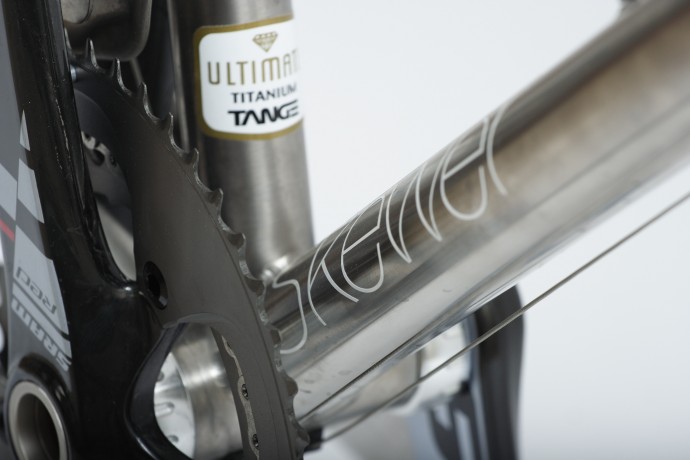
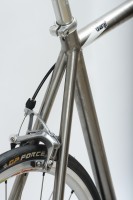
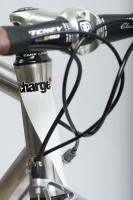
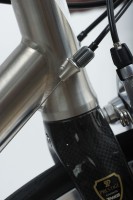
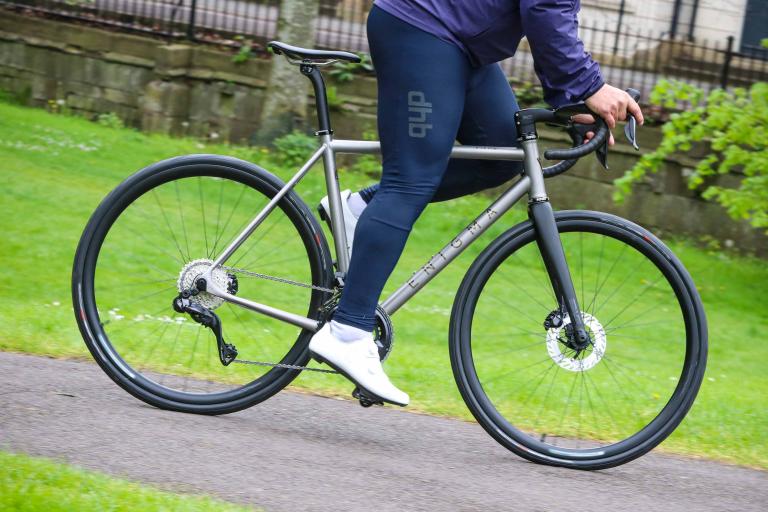
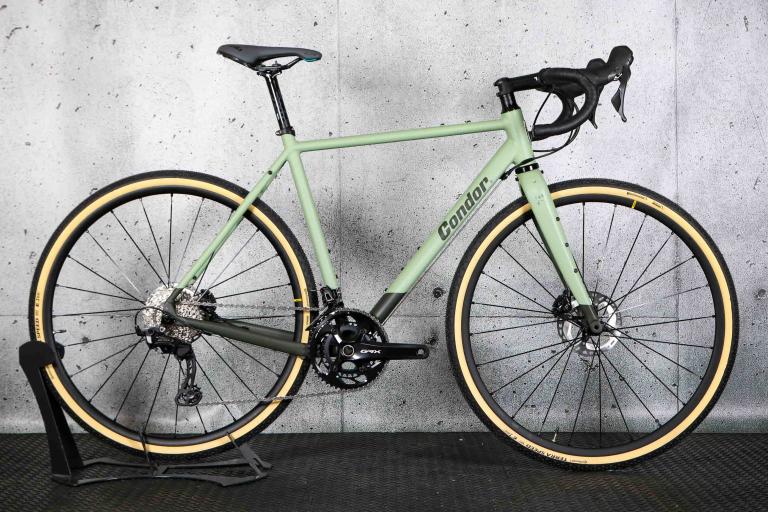
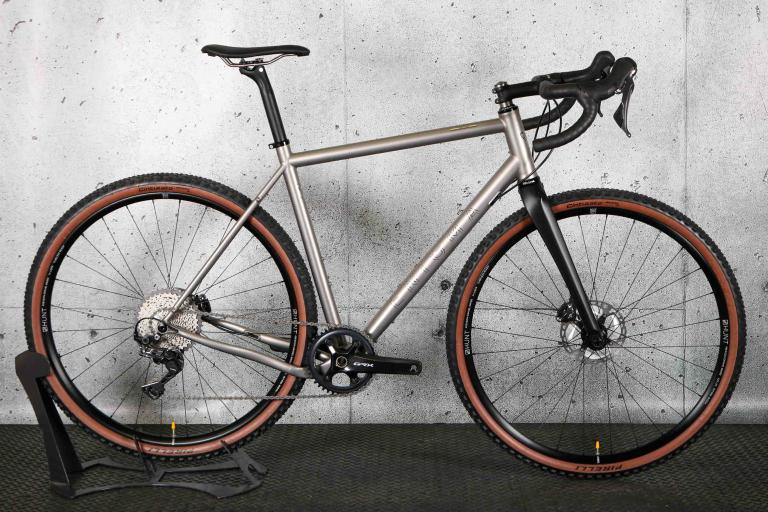

I'm no detective, but the "NOAHFAST" decal vertically stickered on the headtube is a little bit of a clue.
Cars ruin villages, not cycle lanes.
I remember my driving test examiner, straight after congratulating me for having passed the test said, "Don't be a twat and have that as your best...
Would believe the rejuvenation claims if they hadn't cherry picked where publicity photos were taken and not being funny but toy cop on the right...
Even when you are able to ram the real stats down their throats the NIMBY's will still whine.
Did they think it was a drive thru?
As a teacher's husband, I'm allowed to watch up to 50km out (unless it's a big mountain stage when I can only watch up to the start of the first HC...
I thought wide rims and tires were marketing hype until I bought a bike in 2019 that had both... 700x32C tires on a 25mm internal width rim. Now I...
Is this the helmet that Ben Chapman has been wearing on his India Bikepacking trip?...
This doesn't actually look ridiculous (seems to be the normal way to judge what's "safe" for cyclists)!...